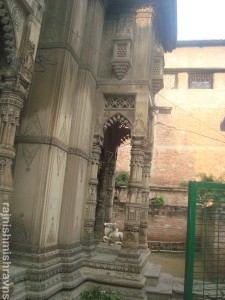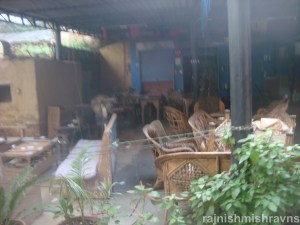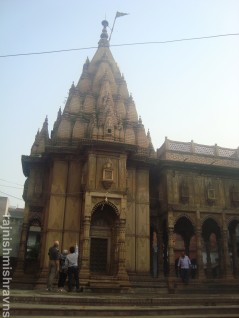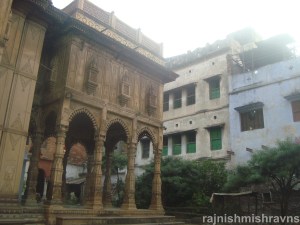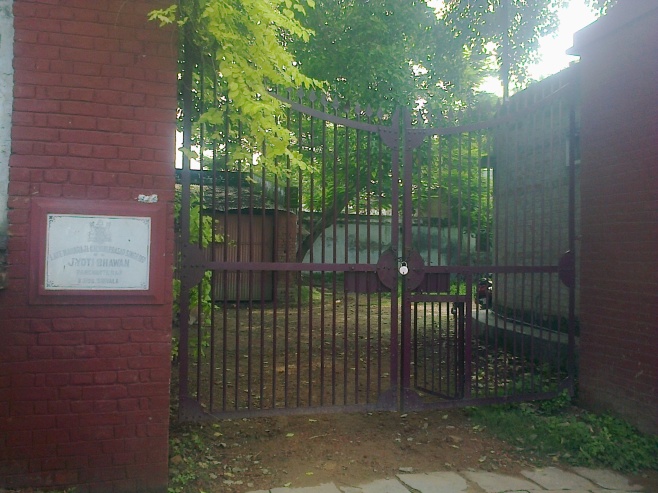I had begun with the concept of oasis in the city in one of my previous posts. It was about Kooch Behar Kali Bari, and I had contrasted its green space with the concrete-asphalt area around it. This time round the term is used for the positive extreme of the polarity of concrete-asphalt; about an aesthetically pleasing building set amidst an apparently impossible open space in the heart of the densely populated Banaras.
This temple, situated at nearly the end of the dense network of galis between Raj Ghat and Dashashwamedh Ghat, is unique because of the open space around it. Temples in this zone have been found claustrophobically cramped by foreign visitors, not without any reason. Of course there is Gyaan Vaapi and then Adi Vishweshwar Temple, but open space in one of them is no more, and in the other it’s not much. Houses from all the directions are looking at the temple at Godowlia, water in mouth, to pounce upon the space in front of them and claim it as their own. Change has not left this campus untouched. Urballaghology knocks.
I had not thought that this post will touch the issue of change right in the beginning. I had planned first to display the aesthetic treat the temple offers to the eyes, in entirety and in its parts too. I still intend to do so, but after having covered change in the temple campus. There used to be more greenery in the compound once, i.e. when I was a child. I remember the Pandanus fascicularis (ketaki/kevda) plant that used to be near the back opening of the sanctum sanctorum of the temple, its roots hanging in the air and its sharp edged leaves. Then, there used to be a couple of trees of the yellow variety of Nerium oleander. And there used to be no brick walls in that region. It used to be an invitingly open space; open for children to play in.
There used to be a commercial set up around the entrance pathway back then too, but it has expanded too much now. Although the temple is the property of the erstwhile King of Kasi, many people use the premises, I am quite sure in a very unauthorized manner. The open space in front of the temple is used by the owners of cows from a nearby house. They keep their cows there, on both the sides of the entrance near the long stone steps.
Many other temple compounds in Kasi are being used in a similar manner. The compound of the temple on Panchkot Ghat has now become a privately owned and jealously guarded guest house, solely for foreign nationals. The same compound where we used to play freely in our childhood now considers as trespassers anyone who does not bring them money, and they aren’t welcome at all. I speak from personal experience. I’ll try not to tell that story on these posts. It’s too bitter to be here. Now, back to the temple.
As one enters the gate of the compound from the street, walks a few steps forward and turns left, the eyes are greeted by an open space and a finely carved stone temple set at the centre of a stone platform. A flight of stone stairs rises from the ground level to take the visitor up to the temple.
One peculiarity of this temple is that its facade is actually the left side of the temple whose front opens to a very narrow gallery like space between the entrance to the temple’s pavilion and the set of houses to the left in the image of the right hand above.
This work is licensed under a Creative Commons Attribution-NonCommercial-NoDerivs 3.0 Unported License.

